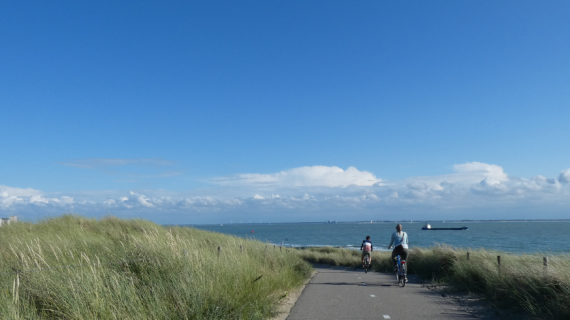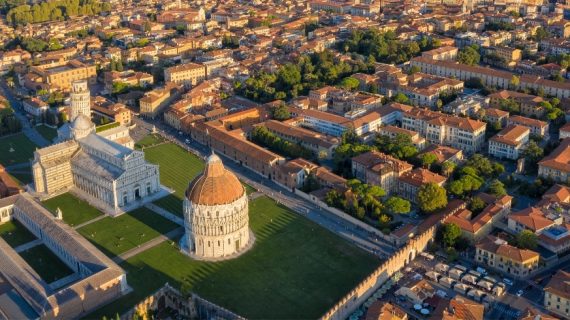One of the most famous and trendy cities in Europe, among the most visited in the world: Barcelona. It’s a combination of history and modernity, design, culture, art and gastronomy. Unique for its monuments, for the life that flows in the streets, for the sea and the mild climate.
The Catalan capital is synonymous with the Ramblas, the Sagrada Familia, the Park Güell, the works of Gaudì, the Parc de Montjüic, the Ciutadella or the Barceloneta. But it’s not just that. In fact, there is another side of the city, more hidden, away from the glare but which proudly remains loyal to its history and tradition. In these lines we take you on an alternative journey, off the beaten track, to discover an unexpected city. An unknown Barcelona that doesn’t appear in the guides and that offers surprising and fun tips, even for those who master the city.
A list of places to visit that few people know about and that you can’t miss.
Are you ready to immerse yourself in an atypical Barcelona? Let’s begin.
Horta Labyrinth-Park

The park is a historic garden, the oldest and best preserved in use in the whole city.
It’s located in the neighborhood of Horta-Guinardó, in Passeig dels Castanyers, and is mostly frequented by local people.
The cypress labyrinth, which gives the park its name, is a work of the Italian architect Domenico Bagutti. It was commissioned by the wealthy Desvalles family in 1792. The place is 9 hectares large and consists of neoclassical and romantic gardens. Next to the well-known labyrinth, in the centre of which stands a statue of Eros, there are two Italian-style temples, a waterfall, Tuscan columns and a moss garden.
Since the 1970s, the park has become the property of the city of Barcelona and is open to the public with an admission price of just over a couple of euros. You can have a packed lunch, walk, meditate, enjoy the tranquility or admire the greenery and architecture of this suggestive and fascinating work.
The columns of the Temple of Augustus
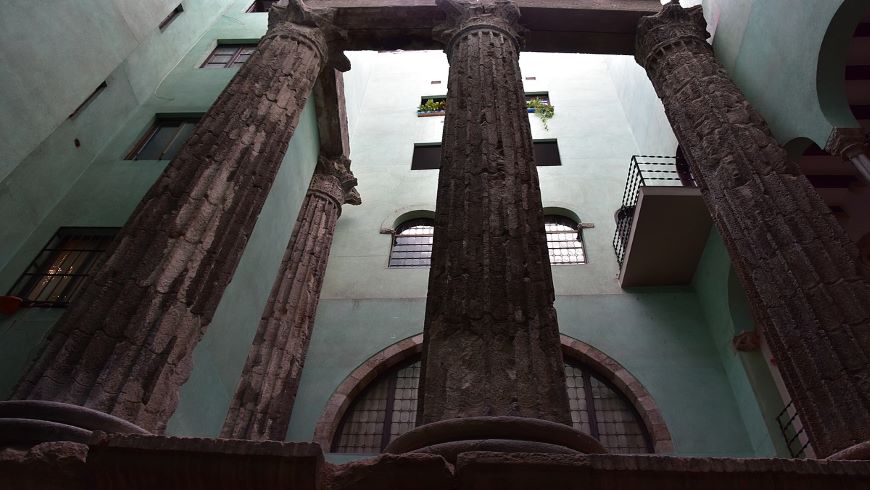
If you are in the Gothic District, in the historic centre, don’t miss a glimpse of millenary history. Reach Carrer Paradís at number 10 and you will find yourself in front of a Renaissance-style medieval stone palace. At its entrance, below, there is a millstone and on the right wall a description on a plaque.
Admire the architecture, continue to the end, then turn right, go down a few steps and the show is served: four Roman nine-metre-high columns stand out in a very small space. These are the only remaining original and intact of the Temple of Augustus built at the end of the first century BC, in honor of the emperor Augustus. You’ll find some information panels that tell you a bit of history. And admission is free!
The bunkers of Carmel
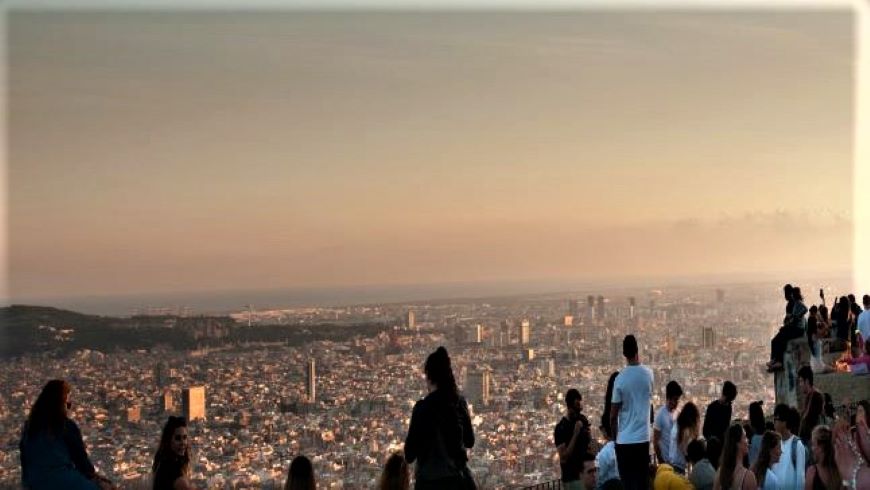
A place on top of the hill, at 262 meters, on the Turó de la Rovira hill, in the Carmel district. It offers a breathtaking 360-degree view of Barcelona.
These bunkers were built during the Spanish Civil War and used as an anti-aircraft battery to defend the city from bombing by the Francoist army. Today the remains can still be seen, and inside you’ll also find a small “museum” that tells the story.
This space offers one of the most evocative views of the city and combines a piece of Catalan history. Many people reach the place, especially at sunset, on foot, along an uphill and not very lighted path, to enjoy the view while sipping a “cerveza“.
A walk along the Turó de la Rovira hill
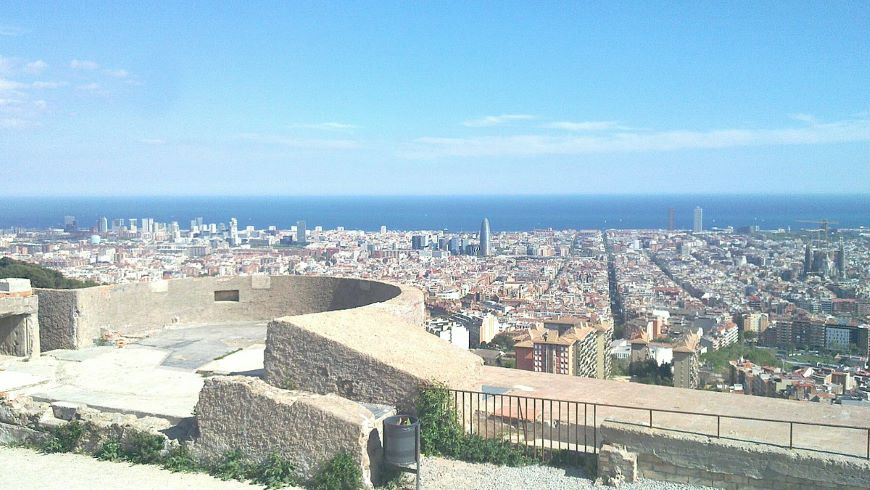
Let’s focus on Turó de la Rovira, one of the different hills that surround the Catalan capital. We suggest you to go trekking to discover the different points of an unknown Barcelona. You’ll enjoy the excellent view of the city. An easy walk, of about 4 kilometres, with a difference in height of 250 metres.
The start is at the entrance of the Guinardó Park from where you reach the bunkers just described. From here continue to the Parc del Carmel until you reach another viewpoint, which is located on the summit of the adjacent Parc Güell: the Mirador de Joan Sales.
You can stop for a break and then head to the Parc de la Creueta del Coll, a perfect oasis of peace, ideal for a picnic or to enjoy some tapas at the bar.
The modernist enclosure of Sant Pau
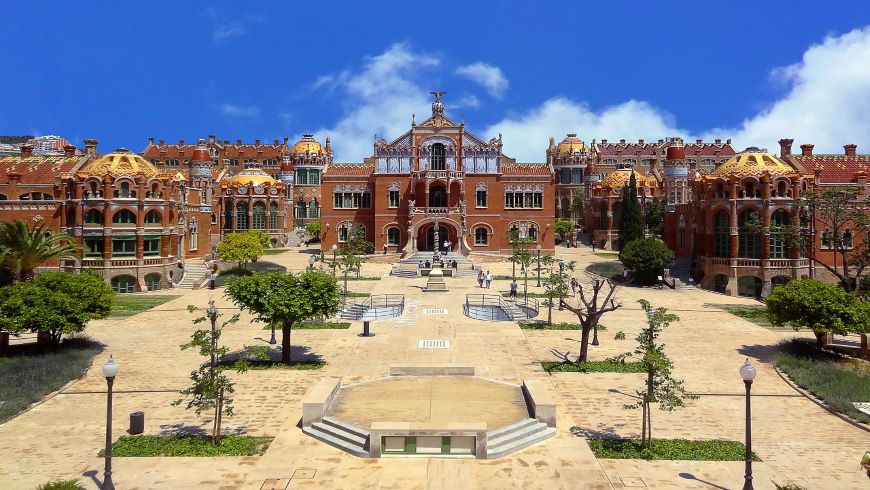
It’s a former hospital and the largest modernist complex in Europe, declared a Unesco World Heritage Site in 1997. Built between 1902 and 1930, it’s the most important work of the Catalan architect Domènech i Montaner.
The artist created this eclectic hospital in neo-Gothic style with bricks, glazed tiles, stained glass, majolica and mosaics that make it a unique and inimitable ornamental show. A sort of city where there are pavilions, streets, underground galleries, gardens, a church and a convent.
It’s located in Carrer de Sant Antoni Maria Claret, 167, in the Guinardò district. Admission is subject to a fee and there are also guided tours. A surprise in the heart of an unknown Barcelona.
Casa Vicens
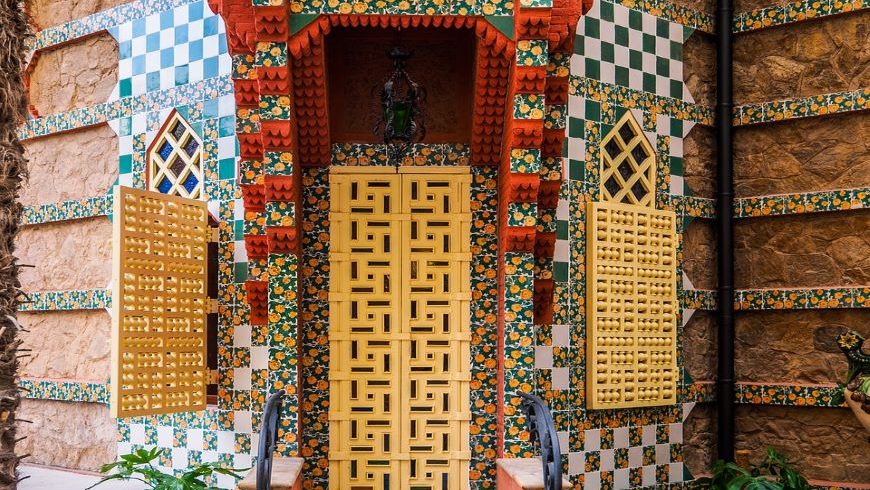
In the mythical and emblematic district of Gràcia, in Carrer de les Carolines, you can admire the first important work of Gaudí: Casa Vicens. A building of modernist architecture declared a World Heritage Site by Unesco in 2005.
A spectacular, detailed, lively and colorful building, with motifs inspired by the shapes of nature, with extraordinary decorations in ceramic, tiles and wrought iron on the external walls and turrets.
A way also to learn about the origins of this architectural genius, citizen pride and world icon, and to better understand his later works.
During the tour, you can enter all the spaces of the building with a paid entrance that can be purchased at the museum ticket offices, or online on the official website.
Street art in Barcelona
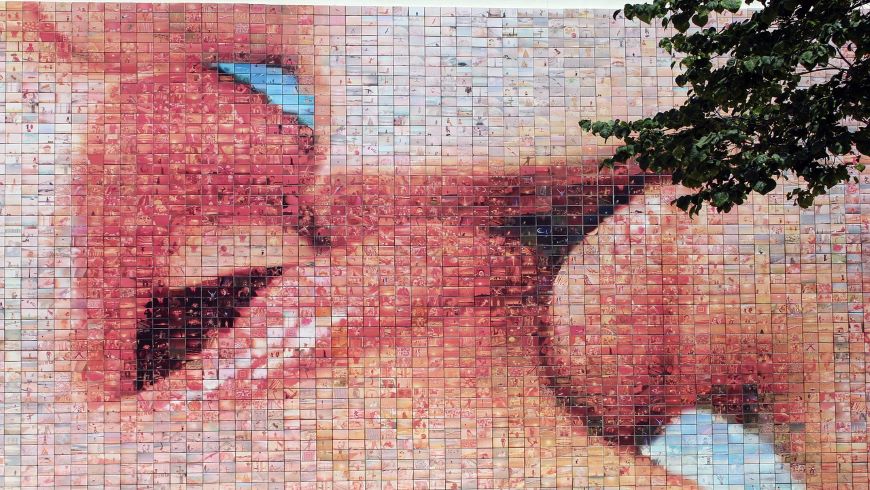
For a different art tour try wandering around the city, known for its street artists and for being an open-air museum. You can discover hidden treasures and at the same time get to know the neighborhoods of the city.
A prime example is the building of the former factory La Carboneria, one of the oldest in the city. It’s located in Carrer del Comte d’Urgell, on the corner with Floridablanca, in the Eixample area. Originally called Casa Tarragò, it later became a social centre saved from demolition. Now it’s a place of artistic and historical interest, thanks also to the mural that covers the entire facade: a huge hot-air balloon with one of the balconies at the bottom representing the basket.
The lively district of Gràcia, populated by Catalan families, artists and students, offers many amazing squares, ideal for having fun or relaxing. If you wander through its streets you’ll find the interesting works of the local artist Ax Colours who reproduces the protagonists of the most famous TV series of recent times such as Breaking Bad, The Walking Dad and Games of Thrones.
Not to mention the industrial district of Poblenou: a succession of galleries, exhibition spaces and start-ups in its former abandoned factories now in vogue as a hub of emerging arts.
Kiss of Freedom
It’s imperative to include in this list also the much photographed “kiss of freedom“. The mural “The World begins with every kiss?” which is located in Plaça d’Isidre Nonell.
An 8 × 4 metre ceramic tile work inaugurated in 2014. From an idea of the Catalan photographer Joan Fontcuberta who collected 4,000 shots of the inhabitants of Barcelona who were asked to immortalize a moment of freedom. The artist then joined them as in a mosaic, so that from a distance it looks like a kiss between two people.
It was supposed to be a contemporary exhibition but the local government has decreed it as definitive.
Sant Andreu district
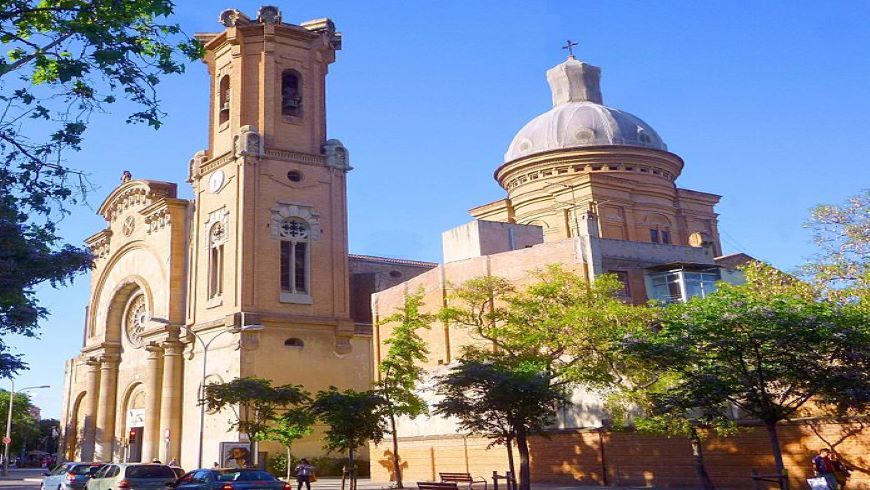
For a truly authentic Catalan experience, immerse yourself in the Sant Andreu district. It’s a residential area, quite outside the most central districts, where the natives still live without the multiculturalism of the historic centre. A quiet place with green areas, where costs are lower. You can eat authentically at a reasonable price and you can still find the characteristics of the “village”.
You can visit the two ancient churches, Sant Andreu de Palomar and Sant Pacia, where there is a real mosaic by Gaudì. But also the Parque de la Pegaso and the one of the Trinitat. The Farmers’ Market and the MUHBA (Museum of the History of Barcelona) at Fabra i Coats, a former textile factory that now hosts cultural, educational projects and museum spaces.
Laribal Gardens
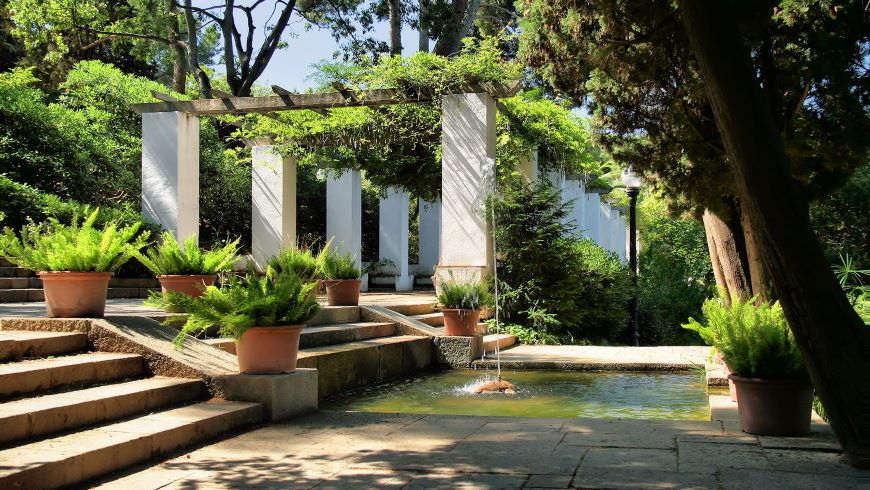
If you go up to the Montjuic mountain and keep the north flank, not far from the Magic Fountain, you will encounter the Jardines Laribal. They were named in honor of the owner, the lawyer Josep Laribal. It’s an area of about 3 hectares of land, with free admission. It consists of terraces, stairways, green squares and benches where you can rest, read and relax. Surrounded by ancient plants, fruit trees, rural plants and many elements reminiscent of Arabian gardens.
An ancient olive tree will lead you to the Greek theatre. It was built in 1929 by the architects Reventós Ramon and Nicolau Maria Rubió who drew inspiration from the plan of the Epidaurus theatre. The structure, with an area of 460 square metres, can hold up to almost 2,000 spectators.
The Monastery of Pedralbes
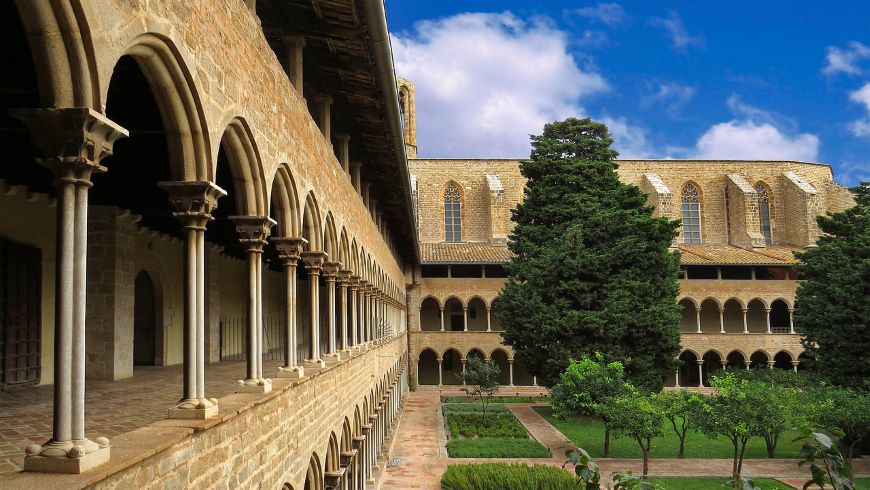
With its church and cloister, the Monastery of Pedralbes is the best example of Catalan Gothic style. A real gem founded in 1937 to welcome the cloistered nuns of the order of the Poor Clares.
A historical and artistic monument a little hidden from the more famous ones, but of great value and beauty. The different medieval buildings and the cobbled floor immediately take you back in time. In addition to the cells, the medicinal garden, the Chapel of San Michele, the dormitory, the choirs, the stained glass windows, the tomb of Queen Elisenda de Moncada, there is also a space for a permanent exhibition, where the history of the monastery is explained.
The exact address is Baixada del monestir, number 9. Although it’s not close to the centre, it’s easily accessible. Entrance to the monastery is subject to a fee.
Do you know other secret places of your unknown Barcelona? If there is anything you would like to add or report to this list, do not hesitate to leave a comment and tell us your experience.

 Hotel Barcellona Princess – Green Resort in Barcelona, Catalonia, ES
Hotel Barcellona Princess – Green Resort in Barcelona, Catalonia, ES 